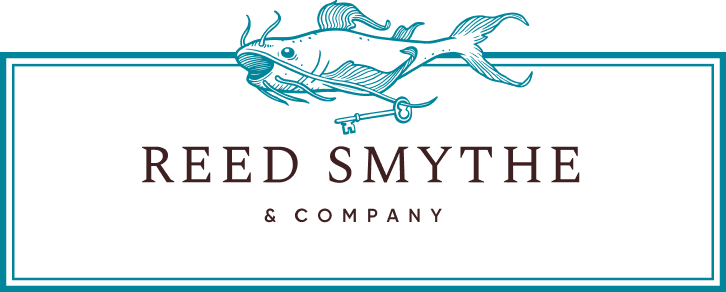Intentional Clutter: Design's Oldest "New" Trend

I recently picked up a copy of House Beautiful—a magazine I love—and happened upon a story about "Intentional Clutter," a term I'd never encountered before. As I tucked into the piece (while waiting on my dentist), I learned that intentional clutter is "a new design concept that involves arranging items in a way that's visually appealing and functional, while still feeling organic and lived-in. [It's] the curation of beloved objects and collections—it's a lived-in aesthetic that shows off who you are and what you love. And this year, designers and homeowners alike are embracing this new take on maximalism."
I know it's the job of magazines and social media to identify new trends in design, but this one had me scratching my head. Is this really a new thing?, I wondered. Is this a "look" you can whip up in a weekend? It reminded me a little of Tik Tok's 2024 celebration of "bookshelf wealth," another design trend that called for - well - filling your bookshelves with actual books. I'm definitely not one to reject trends out of hand (I've always wanted a La Cornue stove); or to hold on to trends that have reached their sell-by date (though I'll confess I wouldn't mind adding a ruffly chintz valance to my bedroom windows). But there is something almost sad to me about reducing the most beautiful and essential element of living in a house to a "trend." At the risk of being a contrarian, I thought I'd share some of the lessons I've learned over the years about achieving unintentional clutter - piles and collections and bookshelves that have become something personal and intimate and beautiful without one ounce of intention.
Lesson 1: A layered house takes years—not dollars—to create
When I was a little girl, my favorite house in the small Mississippi town where I grew up belonged to Anne Ross McGee, whose nickname was Bossy, and who was one of the most effortlessly chic women I've ever met. (Her daughters Elizabeth and Anne inherited their mother's touch, and I'm so glad to call them my friends). Every year, Anne Ross hosted the most wonderful Christmas Eve party, and even at age 9 or 10, I would use the occasion as an opportunity to walk through her rooms and to ponder what made them so fabulous. What did I notice? Everywhere there was something old mixed with something new - a tattered Persian rug (inherited from her mother) rolled out atop cheap rush matting that I knew had come from the carpet remnant store I'd visited with my mother. Bookshelves filled with novels and history, family photo albums and an odd bit of taxidermy beneath a glass dome. The powder room wasn't renovated, but in it hung a rogue's gallery of family photographs ranging from early dagguerrotypes to full color shots of their girls from the summer before. Nothing in it felt assembled. It was more like looking at the layers of sediment in a rock face that had formed over epochs. It had taken a well-lived life to achieve the "look" that made Anne Ross' house so warm and interesting and fun.
Lesson 2: Hoard away, but organize the piles
Hoarding has gotten a bad rap, much of that thanks to Hoarders, the A&E reality show that aired in 2009 and ran for 15 seasons. There is scary hoarding and meaningful hoarding - which involves loosely organizing things you have collected that have value to you. I once had a friend whose mother kept every single issue of The World of Interiors piled chronologically on the stairs leading up to the attic guest room of her Pennsylvania farmhouse. On the top steps were issues from mid '80s when she started subscribing; each new step marked the years - and an era of British design - as you descended the stairs, ending somewhere in the early 'aughts. At that point, piles of Country Living started, and I suspect there were some Elle Decors and Architectural Digests in there too. My friend's mother was not fussy and didn't have time to consider whether her stacks of magazines were on trend. She liked keeping them. She referred to them often. The stairwell was free space because her bookshelves were filled with books.
Lesson 3: Group photos in a rogue's gallery:
As a little girl, one of my cousins' and my favorite pastimes while waiting for Sunday lunch to be served, was to run up and down the hall at my grandparents' house and to guess which black and white photograph on the wall was of which grown-up (or dead) relative. We would laugh without fail at the pointed nose and high collar of our grandmother's Austrian great aunt "Tante Luitgard," and we would secretly give thanks that we didn't look a thing like her. My grandmother called this her rogue's gallery, not a new term to anyone reading this, but a new one to us children. On this wall, my grandmother had haphazardly (but with some eye toward symmetry) hung photographs of the generations of our family. The images were hung in no particular chronology. Every inch of the wall was covered, some might say cluttered. But there was no design intention. The entire endeavor was about the people in the photos, not the way the frames looked on the walls. And the best thing about this way of collecting: there's no significant cost or style rule to consider. Everyone has family photos, and frames come in plentiful styles and many price points.
Lesson 4: Mass collections of like things
My husband, Jon, has been obsessed with American Presidents from the time he was a child. As a ten year-old, he went door to door handing out Reagan yard signs before the 1980 campaign. His enthusiasm and determination that summer made him the top distributor of signs for the local campaign headquarters, which scored him an invitation to the inauguration. As an adult, his love for all things presidential has taken many forms. The one that has been most trying for me is his collection of presidential busts. These are not majestic marble busts of George Washington found in antique stores that might sit on a handsome plinth in a well-appointed office. These are the papier-mâché and faux-bronze versions sold at the gift shops of historic sites. Jefferson at Monticello. FDR at Hyde Park. And so on. Tacky, some might say. For years I had been trying to hide these busts in boxes in the basement or even behind a row of books on a bookshelf, but every time I thought I'd succeeded in getting rid of a large faux-bronze Eisenhower head, Jon would find him and place him back in his position of pride around the office, and sometimes even the living room. When we were preparing to move from New York to Nashville, our beloved decorators Bill Brockschmidt and Courtney Coleman suggested that perhaps the busts would have more impact if they were massed on a side table so they could be appreciated for their diversity and volume. Now, every time I pass by Jon's table of busts, I feel a tug at my heart.













